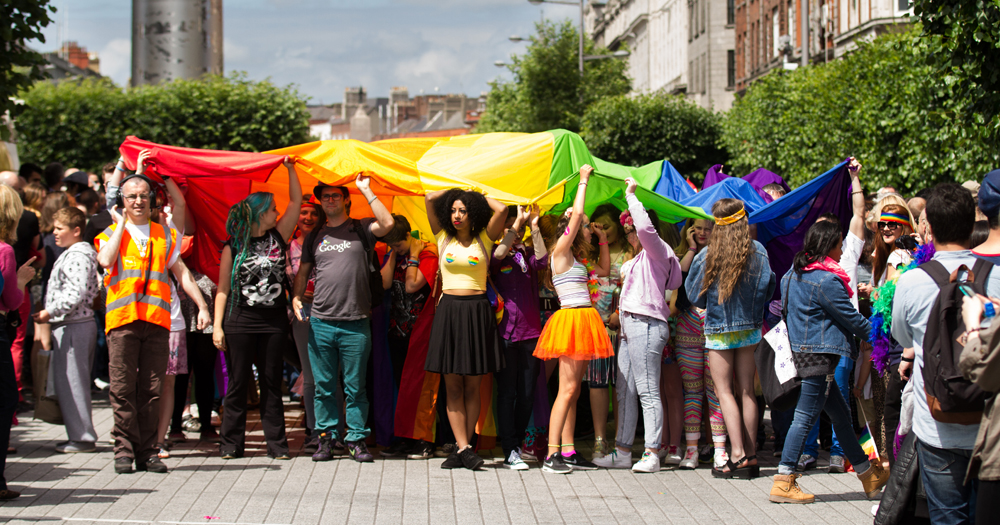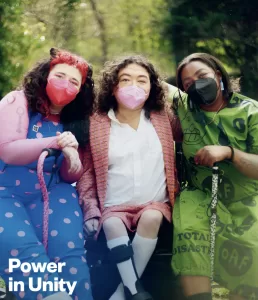Questions about the importance of LGBTQ+ safe spaces, and how to best create and maintain them, are essential to progress, and in a community as diverse as ours, there are many different answers to the same question.
In such a multifaceted landscape, myriad perspectives offer different solutions and viewpoints on the same issues. While the intricacies of these discussions may sometimes obscure the broader picture, a return to fundamentals unveils a resounding truth: our collective need for safe spaces is intrinsically tied to a shared desire for connection and support.
Living in a society predominantly structured around heteronormative standards, queer people often find themselves navigating spaces not designed with their needs in mind. Because of this, the establishment of LGBTQ+-specific spaces has become an act of reclaiming autonomy and affirming one’s right to exist authentically. These safe spaces can provide a refuge from a world that may otherwise feel unwelcoming or outright hostile. In a time marked by the resurgence of far-right rhetoric and sometimes open hostility, the importance of having somewhere where one can simply exist without judgment cannot be overstated.
Safe spaces must not only accept LGBTQ+ identities but also celebrate them. As Kate Moynihan, the CEO of LINC puts it, safe spaces are all about “feeling that you’re okay, you’re okay to be you”. For Oisín O’Reilly, the CEO of Outhouse, safe spaces are about the things that bring the LGBTQ+ community together on different levels.
The first is building connection: “It’s what happens in our café, the little conversations and the meet-ups between friends or strangers talking to each other, or people coming to one of the many social groups here. That builds resilience, friendship, connectedness, and helps people’s self-confidence grow.” The next important aspect is community support, the act of simply having “a place to call when you have your questions,” and providing spaces to help the community thrive “as people recover from the trauma that we’ve experienced in life”.
For those in rural areas, as Christina Fitzharris, Coordinator of the Midlands LGBT+ Project puts it, the need for those safe spaces where LGBTQ+ people can come together to share experiences is amplified. In regions where acceptance may be scarce and queer venues are often few and far between, the need for safe havens becomes even more pronounced.
As Christina emphasises: “Working in rural Ireland, it is even more important to have safe spaces because there are fewer accepting spaces.”
Without these visible resources, individuals may feel compelled to leave their communities in search of acceptance – a testament in itself to the vital role safe spaces play in fostering inclusivity and preventing isolation.
“Safe Spaces shouldn’t be just a private, discreet meet up; some of them have to be loud and proud,” Christina continues.
Even small things such as Pride flags in storefronts, or explicit declarations of inclusivity, can create much needed visibility that serves as a beacon of hope for those in need of a welcoming environment.
With this in mind, it’s also crucial to understand that safe spaces aren’t one-size-fits-all. As Kate emphasises, individual requirements vary based on factors like location, age and comfort with one’s identity. Talking about her work at LINC, she highlights the importance of safe spaces for queer women specifically, stating:
“It is important to create spaces where we can share experiences that they might not share with the rest of the LGBTQ+ community.”
Christina echoes this sentiment, highlighting the subjective nature of what constitutes a safe space. She emphasises that what may feel comfortable for one person may not necessarily be so for another. Additionally, the needs of individuals in rural areas versus urban settings, or those who are openly LGBTQ+ versus those who are not, can differ significantly. “For instance,” Christina says, “a trans person who is not out may require a different type of safe space compared to someone who is openly seeking social interaction.”
Similarly, age can also play a role, with older LGBTQ+ individuals potentially needing different forms of support compared to younger folks.
Following this sentiment, Oisín highlights the need for intersectionality, that it is crucial to understand the unique experiences and needs of individuals who may belong to multiple marginalised communities within the queer umbrella. “We have to get in and understand [those experiences] to help create safety for those people.” He adds that, next to intersectionality, striving towards equity is one of the main points when trying to support the LGBTQ+ community as a whole. “Equity isn’t about treating everyone the same. It’s about allocating our very limited resources to those people who face the most institutional and structural barriers.” For him, this process is about engagement and conversations not only with others but also within the LGBTQ+ community.
Asking hard questions and having challenging conversations is crucial. Questions and education about privilege and access to community resources need to be continuously re-examined to maintain a welcoming space.
The importance of LGBTQ+ safe spaces extends beyond their physical boundaries. While they can offer solace and support within their confines, their true power lies in empowering individuals to venture into the world with more confidence. As Kate puts it, “It’s the feeling that you can go and face the world because you have a community that is with you […] you belong somewhere”.
In other words, it’s about harnessing the collective support of a community, finding and creating solidarity, and affirming one’s inherent worth and identity. In their best cases, they serve as springboards for personal growth and self-discovery, equipping LGBTQ+ individuals with the courage to confront the challenges of the outside world head-on, secure in the knowledge that they are not alone.
Talking about her work at the Midlands LGBT+ Project, Christina highlights the aspirational aspect safe spaces can have when they connect individuals – “We provide different spaces, but the hope is that these spaces can grow outside of us.”
Next to the individual empowerment that safe spaces can offer, the spaces themselves can go on to change society in a broader sense. Oisín reflects on the big part they have played in the history of societal change. He says that the conversations and connections we have made in those spaces “have created this wonderful movement for positive social change in our society that has gone on to fundamentally alter the makeup of our society.
“We’re only at the start of that journey. There’s a whole way to go. And safe spaces allow those things to happen.”
This story originally appeared in GCN’s April 2024 issue 383. Read the full issue here.
© 2024 GCN (Gay Community News). All rights reserved.
This article was published in the print edition Issue No. 383 (April 1, 2024). Click here to read it now.
Support GCN
GCN is a free, vital resource for Ireland’s LGBTQ+ community since 1988.
GCN is a trading name of National LGBT Federation CLG, a registered charity - Charity Number: 20034580.
GCN relies on the generous support of the community and allies to sustain the crucial work that we do. Producing GCN is costly, and, in an industry which has been hugely impacted by rising costs, we need your support to help sustain and grow this vital resource.
Supporting GCN for as little as €1.99 per month will help us continue our work as Ireland’s free, independent LGBTQ+ media.


comments. Please sign in to comment.